Money of the Kingdom of Heavenly Peace
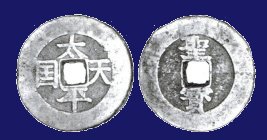 Few people, if asked today, could identify the Kingdom of Heavenly Peace, tell you where it was located, or how or why it came into existence. The Kingdom of Heavenly Peace, founded in 1850, started as a noble experiment with great promise, which soon turned into outright rebellion against the Chinese Empire. The movement went terribly wrong, ultimately claiming the lives of 25 million Chinese before government troops, aided by Western forces, restored order.
Few people, if asked today, could identify the Kingdom of Heavenly Peace, tell you where it was located, or how or why it came into existence. The Kingdom of Heavenly Peace, founded in 1850, started as a noble experiment with great promise, which soon turned into outright rebellion against the Chinese Empire. The movement went terribly wrong, ultimately claiming the lives of 25 million Chinese before government troops, aided by Western forces, restored order.
During their fifteen year civil war the T'ai P'ing rebels, as they were called, formed a government which included an army, a civilian civil service bureaucracy, treasury and even a postal system of their own. This article studies the money of the T'ai P'ing rebels including both coins and bank notes. Few specimens of either survive today. The coin issues are varied and interesting. The bank notes, although referenced in various old numismatic books, are completely unknown to Westerners, have never been cataloged, and to my knowledge appear here for the first time.
Click to download PDF here.
Shanghai's Wartime Emergency Money
 This is the story of a little known aspect of China's history and an oft neglected area of numismatics. The setting of this article is the Chinese city of Shanghai and the year is 1939. Dire things are about to happen which will drastically change the way the city goes about its business.
This is the story of a little known aspect of China's history and an oft neglected area of numismatics. The setting of this article is the Chinese city of Shanghai and the year is 1939. Dire things are about to happen which will drastically change the way the city goes about its business.
To set the stage the author takes you through the years leading up to 1937, when the Japanese invaded China prior to World War II. After abandoning the silver standard in 1935, the Chinese government set about to unify and stabilize both coins and bank notes. After working for awhile, inflation set in due to the war ultimately driving Shanghai's merchants to the use of emergency money to keep commerce flowing.
Click to download PDF here.
Cast Coinage of the "Ming Rebels"
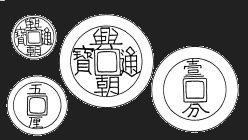 The Ming dynasty lasted from 1368 to the year 1644 when China was over-run by barbarians from the north calling themselves Manchus. These fierce horsemen quickly conquered the decadent Ming, in turn establishing their own Ch'ing dynasty, China's last experiment with imperial rule.
The Ming dynasty lasted from 1368 to the year 1644 when China was over-run by barbarians from the north calling themselves Manchus. These fierce horsemen quickly conquered the decadent Ming, in turn establishing their own Ch'ing dynasty, China's last experiment with imperial rule.
The Ming court did not die easily, however, as one usurper after the other tried, for forty years, to reestablish Ming rule. Collectively these men were known as the "Ming Rebels". Each prince and warlord had his own court, army and bureaucratic following, setting up bases in various parts of China from which to overthrow the Ch'ing. Some enjoyed significant success while others did not. All, however, issued their own cast coinage for use in the areas they temporarily held. The coins are well executed, beautiful, specimens and are reasonably easy to acquire even today.
This article tracks the history of each rebel revealing both treachery and brutality in the attempt to eliminate the remaining vestige of loyalty to the Ming dynasty. The coin issues of each Ming Rebel are described in detail.
Click to download PDF here.
The Money of Communist China - Part I
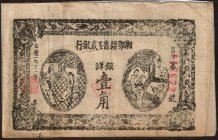 Prior to 1949 the People's Republic of China did not exist as such. In its place, commencing in 1927, was a Communist party which controlled scattered areas throughout China known as "soviets". These bases underwent many changes; first at the hands of victorious Nationalist armies, and after 1937, the Japanese invaders. These early Communists were self sufficient in every way. This included the manufacture and circulation of their own currency - including both coins and paper money. Driven out of their southern soviets by Chang Kai-shek's Nationalist army in 1934, the Communists fled north on their Long March to escape annihilation and to save their cause. There they stayed to fight the Japanese, and after World War II, to engage in all out civil war against the Nationalists for control of all of China.
Prior to 1949 the People's Republic of China did not exist as such. In its place, commencing in 1927, was a Communist party which controlled scattered areas throughout China known as "soviets". These bases underwent many changes; first at the hands of victorious Nationalist armies, and after 1937, the Japanese invaders. These early Communists were self sufficient in every way. This included the manufacture and circulation of their own currency - including both coins and paper money. Driven out of their southern soviets by Chang Kai-shek's Nationalist army in 1934, the Communists fled north on their Long March to escape annihilation and to save their cause. There they stayed to fight the Japanese, and after World War II, to engage in all out civil war against the Nationalists for control of all of China.
Part I describes the coins and paper money used by the early soviets from 1927 to 1934, which period ended in the Long March north to Shensi province.
Click to download PDF here.
Japanese Sponsored Coin and Bank Note Issues for the Occupied Regions of China
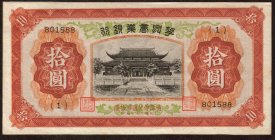 Occasionally, even today, one will encounter in a dealer's junk box or stock, a coin or piece of paper money whose origins lay in Japan's conquest and occupation of China (1937-1945). In order to administer such a vast country, Japan divided China up into administrative regions, each with its own financial management.
Occasionally, even today, one will encounter in a dealer's junk box or stock, a coin or piece of paper money whose origins lay in Japan's conquest and occupation of China (1937-1945). In order to administer such a vast country, Japan divided China up into administrative regions, each with its own financial management.
The coin and bank note issues of these Japanese "puppet" autonomous regions should not be viewed in isolation, as it is the totality of the story that is interesting. Coin collectors, perhaps, are aware of the coins, while bank note collectors are familiar with the various note issues. To appreciate the "total picture" as to what really transpired during the Japanese occupation, they must be viewed together.
Click to download PDF here.
A Monetary History of the Former German Colony of Kiaochou
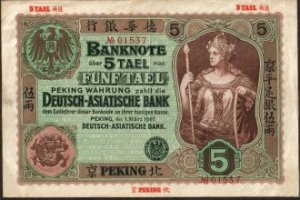 The defeat of China after two Opium Wars left the Ch'ing Dynasty weak and disorganized. European powers were quick to exploit this weakness. Both Britain and France placed exorbitant demands upon China in the form of monetary indemnity for expenses they had incurred during the wars, and for the outright concession of Chinese territory.
The defeat of China after two Opium Wars left the Ch'ing Dynasty weak and disorganized. European powers were quick to exploit this weakness. Both Britain and France placed exorbitant demands upon China in the form of monetary indemnity for expenses they had incurred during the wars, and for the outright concession of Chinese territory.
Sensing this weakness, other European powers were quick to seize territorial concessions and to set up their own 'spheres of influence' within China for commercial purposes. This is the story of how Germany became a colonial player in the China trade.
Click to download PDF here.
Ancient Chinese Cash Notes - the World's First Paper Money - Part I
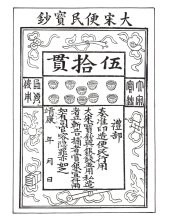 China has had a long and diversified numismatic history. From the dawn of antiquity onward, early Chinese traders used money in one form or another. It was not long after the Chinese invention of paper that the first paper money came into existence, making it the oldest paper money to be found in the world.
China has had a long and diversified numismatic history. From the dawn of antiquity onward, early Chinese traders used money in one form or another. It was not long after the Chinese invention of paper that the first paper money came into existence, making it the oldest paper money to be found in the world.
Part I discusses the evolution of the copper cash coin - the mainstay of the Chinese people for two thousand years - the invention of paper, the discovery of the use of paper money in China by Marco Polo and the various cash notes issued by the Tang, Liao, Sung, Hsia, Chin and Yuan dynasties.
Click to download PDF here.
Ancient Chinese Cash Notes - the World's First Paper Money - Part II
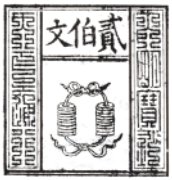 Part II describes Ming dynasty paper money issues and identifies the coins depicted on the 1 kwan bank note of emperor Hung Wu (1378 A.D.)
Part II describes Ming dynasty paper money issues and identifies the coins depicted on the 1 kwan bank note of emperor Hung Wu (1378 A.D.)
Click to download PDF here.
Those Elusive Chinese Mules
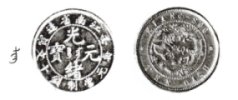 This article examines various possibilities as to how a mule could occur as well as describing some Chinese mules seen by the author.
This article examines various possibilities as to how a mule could occur as well as describing some Chinese mules seen by the author.
Click to download PDF here.
Imperial Currency of the Tai’ping Rebellion-Part I
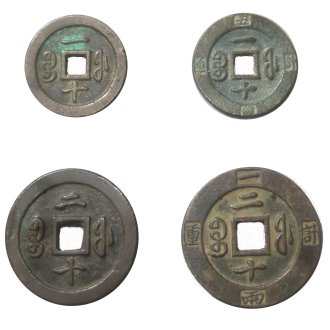
Part I is entitled Emperior Hsien Feng’s Multiple Cash Coins. This article deals with the first attempt to raise money to fight the Tai’ping insurgency. For two thousand years the only circulating currency used in China had been single one cash coins typically bound together in strings of 500 or 1000 cash in order to facilitate commerce. The rebellion changed all this. No longer were strings of coins sufficient to conduct business, thereby necessitating the creation of multiple cash.
Click to download PDF here.